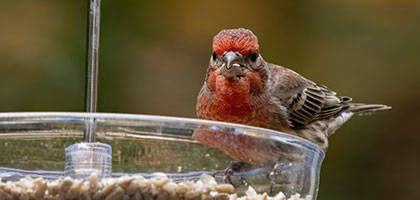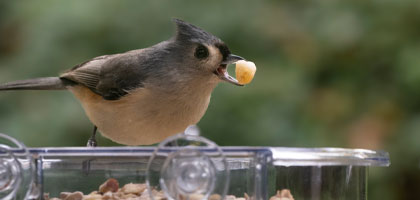Feeding birds can be a rewarding hobby. It brings joy and a sense of connection with nature.
However, it can also attract unwanted guests. Rats, in particular, can become a nuisance.
These rodents are attracted to the bird seed that falls from feeders. They can cause damage and spread diseases.
So, how can you continue to feed birds without attracting rats?
This guide will provide you with practical strategies. It will cover everything from bird seed selection to feeder placement and maintenance.
By following these tips, you can enjoy bird feeding responsibly. You can contribute to bird conservation without causing a rodent problem.
Understanding the Attraction: Why Birds and Rats Cross Paths
Bird feeding creates a bountiful opportunity for rats. Bird seed, especially when it spills onto the ground, attracts rodents seeking an easy meal. Rats are opportunistic feeders and often thrive where food is abundant and accessible.
Additionally, bird feeders are often located in gardens or backyards, areas where rats find shelter and breeding spaces. This combination makes it crucial to understand the dynamics between birds and rats. By recognizing what draws rats to these areas, we can better implement measures to deter them. This understanding is the foundation of successful rodent prevention in bird feeding.
Selecting the Right Bird Seed to Deter Rodents
Choosing bird seed carefully can make a huge difference. Some seeds are less appealing to rodents. For example, rats find safflower seeds and niger seeds less enticing than sunflower seeds.
Consider using no-waste bird seed blends. These blends reduce leftover food that rodents can scavenge. Less waste means less incentive for rats to visit your feeding area.
To further deter rodents, avoid mixed seed with fillers like oats or corn. These are attractive to both birds and rodents. Instead, opt for specialty seeds designed for specific bird species. Here are some seed options to consider:
- Safflower seeds
- Niger (thistle) seeds
- Hulled sunflower seeds (to reduce waste)
Selecting these types can help maintain a rodent-free bird feeding area.
The Best Types of Bird Feeders for a Rodent-Free Experience
The design of your bird feeder plays a critical role in keeping pests away. Opt for weight-sensitive feeders. These close access to food when heavier animals, like rats, attempt to feed.
Baffles or barriers are also effective additions. They prevent rats from climbing to reach the bird feeder. Attaching a dome-shaped baffle above or below can be a simple fix.
Consider using feeders designed with small perches. These are ideal for small birds but challenging for bigger pests. Here are some feeder options to explore:
- Weight-sensitive feeders
- Dome or squirrel baffle feeders
- Tube feeders with small perches
Choosing the right bird feeder helps ensure a pest-free backyard bird feeding experience.
Strategic Feeder Placement to Discourage Unwanted Guests
Where you place bird feeders can greatly influence whether you attract rats or not. Avoid placing feeders too close to fences or bushes. These areas provide cover and easy access for rodents.
Elevate your bird feeder on a sturdy pole to make it less accessible. A height of six feet or more is recommended. This height keeps feeders out of reach from ground-loving pests.
Keep the area below feeders clean and clear. This helps in spotting any signs of rat activity quickly. Regular monitoring will help you maintain a rat-free environment. Strategic placement supports both bird enjoyment and rodent deterrence.
Keeping It Clean: The Importance of Feeder and Ground Maintenance
Cleanliness in bird feeding areas is crucial to avoid attracting rats. Regular cleaning helps remove spilled bird seed that can lure rodents. A tidy environment ensures that only birds benefit from your efforts.
To maintain cleanliness, consider these simple practices:
- Clean feeders regularly to prevent mold and disease.
- Use a tray or seed catcher below feeders to catch spills.
- Rake up fallen seeds daily to prevent ground accumulation.
These steps help maintain a hygienic feeding space while discouraging rodents. Consistent maintenance keeps your bird feeding area healthy and inviting. Prioritize cleanliness to balance enjoyable bird watching with effective rat prevention.
Rodent-Proof Storage Solutions for Bird Seed
Proper storage of bird seed is vital in preventing rodent attraction. Rats can easily chew through weak containers, making seed accessible. To combat this, invest in durable, rodent-proof storage options.
Use metal or thick plastic bins with tight-fitting lids for storing bird seed. These materials are difficult for rodents to penetrate. Always ensure the lids are securely closed to prevent entry.
Keep your seed storage container in a cool, dry place. This minimizes scent detection by rodents and prevents spoilage. By focusing on secure storage, you contribute to an effective rodent deterrence strategy.
Natural Deterrents: Utilizing Predators and Repellents
Natural predators can play a crucial role in controlling rat populations near bird feeding areas. Owls and hawks are natural adversaries to rats. Encouraging their presence in your yard can help deter rodents.
Consider using natural repellents to keep rats at bay. Options like peppermint oil and cayenne pepper are known for their deterrent properties. Apply these around your feeding area to discourage unwanted guests.
Here's a list of natural deterrent strategies:
- Encourage birds of prey by setting up owl boxes or perches.
- Use peppermint oil around storage areas to repel rodents.
- Sprinkle cayenne pepper near feeders to discourage rats.
Community Efforts and Legal Considerations in Rodent Control
Community involvement is vital in managing rodent issues. A cooperative approach can significantly reduce rat populations. Neighbors can work together to implement consistent rodent control strategies.
Educating the community about responsible bird feeding practices is important. Sharing information can help prevent widespread rat problems. It also encourages everyone to adopt more wildlife-friendly feeding habits.
Consider legal factors when dealing with rodents. Some areas have regulations regarding pest control methods. Be informed about local rules to ensure compliance while addressing rat issues effectively. Working within these guidelines helps protect both wildlife and the environment.
Alternative Bird Feeding Methods to Reduce Rat Attraction
Traditional bird feeders are not the only option. Alternative feeding methods can help minimize rat attraction. Try incorporating bird baths and nesting boxes into your garden design.
Bird baths provide water without enticing rodents. They attract birds while keeping the area less interesting to rats. Similarly, nesting boxes support bird populations without the mess of scattered seeds.
Consider these alternative approaches to bird feeding:
- Offer a water source, like a bird bath.
- Install nesting boxes for a safe haven.
- Encourage natural plant growth with berry-producing plants.
By diversifying feeding methods, you create a thriving environment for birds. This approach helps maintain a more balanced ecosystem, keeping rats at bay.
Conclusion: Balancing Bird Welfare with Rodent Control
Feeding birds responsibly requires mindful planning and active effort. By using targeted strategies and alternative methods, you can enjoy birdwatching without inviting unwanted guests. A clean and well-maintained feeder area will keep your garden vibrant and rodent-free.
Your proactive measures benefit both birds and the local ecosystem. Taking the time to implement these practices fosters a healthier, more enjoyable environment for all.






